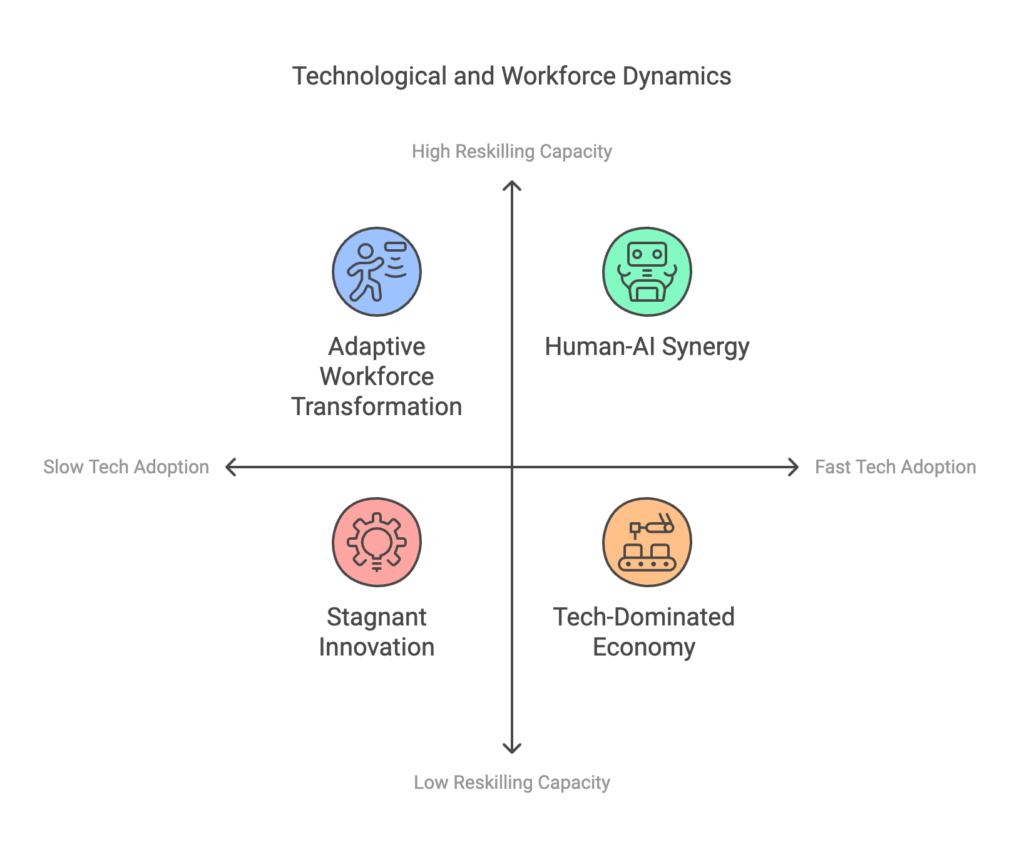Scenario Planning: Mapping Futures to Avoid Blind Spots
Imagine standing at a crossroads, unsure which path the future will take. Scenario planning offers a powerful way to prepare for what lies ahead. It is a structured methodology for envisioning multiple possible futures and understanding how they might unfold. While only one future will happen, scenario planning equips us to anticipate the possibilities, recognize early signals, and respond with confidence instead of being blindsided by uncertainty.
The process begins with understanding the driving forces. These are the underlying factors that shape the world around us: economic trends, technological innovations, political dynamics, environmental shifts, and societal changes. Driving forces are the key dynamics that influence outcomes, directly shaping the uncertainties and trends that underpin our scenarios. By analyzing these forces, we identify critical factors shaping potential futures and prepare more robust strategies.
From there, we build the scenarios. Each scenario represents a distinct future shaped by different combinations of these uncertainties. They are not predictions. Instead, they’re tools for stretching our thinking and preparing us for diverse outcomes.
An Example Scenario Plan – Exploring Technological Advancement + Workforce Evolution
Scenario planning often identifies critical driving forces to frame the uncertainties. In this example, two forces are introduced: Technological Advancement, reflecting the speed of AI and automation adoption, and Workforce Evolution, highlighting the ability of skills, roles, and workforce capacity to adapt. These forces demonstrate how scenario planning connects technology trends with workforce dynamics.
Why These Forces Matter
The accelerating pace of AI and automation is redefining industries, while workforce evolution reflects the skills, roles, and expectations of human labor in this rapidly changing landscape. Together, these forces influence how societies adapt to technological change, creating both opportunities and challenges.
Quadrants
Human-AI Synergy (Fast Tech Adoption, High Reskilling Capacity): Humans and AI collaborate effectively, enhancing productivity, innovation, and job creation.
Tech-Dominated Economy (Fast Tech Adoption, Low Reskilling Capacity): Automation replaces jobs faster than workers can reskill, leading to high unemployment and societal divides.
Stagnant Innovation (Slow Tech Adoption, Low Reskilling Capacity): Technological progress is sluggish, with stagnant productivity and economic malaise.
Adaptive Workforce Transformation (Slow Tech Adoption, High Reskilling Capacity): Technology adoption is gradual, allowing education systems and workers time to adapt, resulting in steady workforce evolution.

Early Signposts to Monitor
Policy Changes: Investments in workforce retraining, UBI pilots, or AI governance frameworks.
Corporate Strategies: Levels of automation adoption and reskilling initiatives by major companies.
Education Evolution: Integration of AI-related skills into curriculums and lifelong learning programs.
Worker Sentiment: Trends in job satisfaction, unionization, and attitudes toward automation.
The Practical Value of Scenario Planning
By imagining how the future might unfold, we can:
Recognize early signals of change.
Test our strategies against multiple futures.
Reduce the risk of being blindsided by unexpected developments.
Make more resilient decisions today.
Scenario planning offers valuable insights that are otherwise unattainable. The visual frameworks above help distill complex dynamics into actionable understanding, empowering decision-makers to act with clarity.
It’s not about controlling the future. It’s about being ready for it. Scenario planning transforms uncertainty from a threat into an opportunity to act with foresight and confidence.
Start imagining. Start planning. The future won’t wait.

